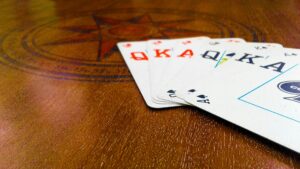When stepping into the vibrant world of casino card games, both Blackjack and Spanish 21 emerge as thrilling options that promise not only a wealth of strategy but also an abundance of excitement. For players weighing their choices or curious aficionados aiming to deepen their understanding, this comparative guide sheds light on the characteristics, rules, and distinctions between Spanish 21 and traditional Blackjack.
The Essence of Blackjack
Blackjack stands as one of the quintessential card games across casinos worldwide. At its core, it involves competing against the dealer in a race to 21 points without exceeding (busting). Players are initially dealt two cards and can choose to ‘hit’ for more cards or ‘stand’ with their current hand. The simplicity of Blackjack, combined with its strategic depth, makes it a perennial favorite among gaming enthusiasts.
Introducing Spanish 21
Spanish 21, a variant of Blackjack, infuses the game with new life through various rule changes and additional player advantages. Most notably, all ’10’ cards are removed from the deck, leaving only the face cards. This alteration significantly impacts strategies and odds, making Spanish 21 an intriguing alternative for players seeking a fresh twist on the classic Blackjack experience.
Comparing Rules and Gameplay
Both games share foundational rules but diverge on several key points. Notably:
- Deck Composition: Spanish 21 is played with 48-card decks (due to the removal of the tens), whereas Blackjack utilizes the standard 52-card deck.
- Player Blackjack Wins: In Spanish 21, a player’s Blackjack always beats the dealer’s Blackjack, a contrast to the potential push in traditional Blackjack.
- Late Surrender: Spanish 21 often allows players to surrender their hand late in the game, reclaiming half their bet after the dealer checks for Blackjack.
Strategic Differences
These rule variations necessitate adjustments in strategy. For example:
- In Spanish 21, players may have a more aggressive strategy due to the late surrender option and the advantage of player Blackjack wins.
- The removed tens in Spanish 21 alter the probability of achieving certain hands, requiring players to adjust expectations and strategies accordingly.
House Edge: A Comparison
The house edge, or the statistical advantage the casino holds over players, varies between the two games due to rule differences. Typically, Blackjack offers a lower house edge, making it a favorite for value-seeking players. However, Spanish 21 compensates with player-friendly rules that can lower the edge when strategic play is applied effectively.
Conclusion: Choosing Your Game
In the final analysis, the choice between Spanish 21 and Blackjack hinges on personal preference and playing style. Traditionalists may gravitate towards the timeless allure of Blackjack, while those seeking a dynamic challenge with a twist will find Spanish 21 an exciting frontier. Whichever game you choose, a depth of strategy, anticipation, and the lure of victory await.



